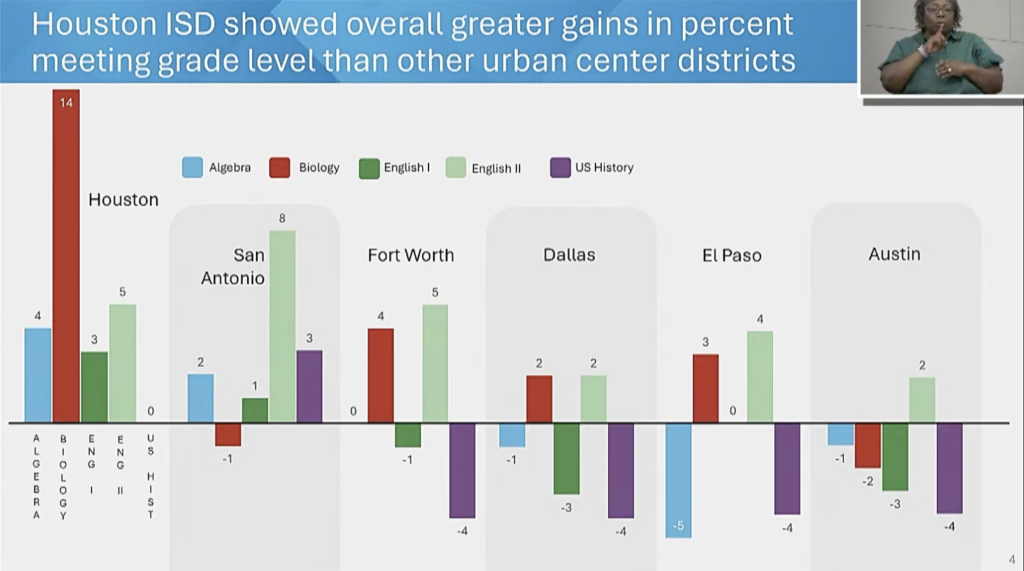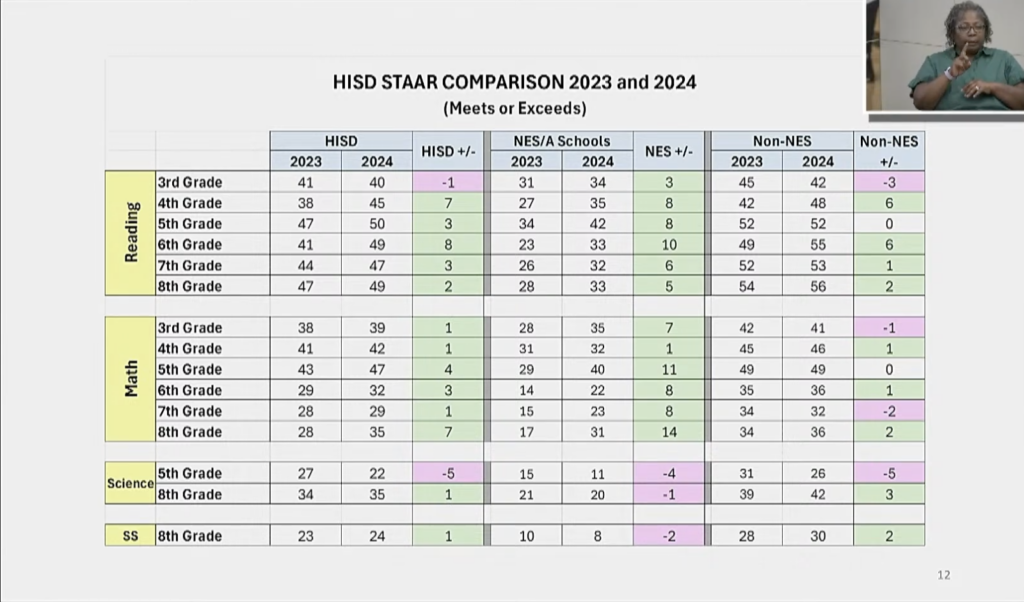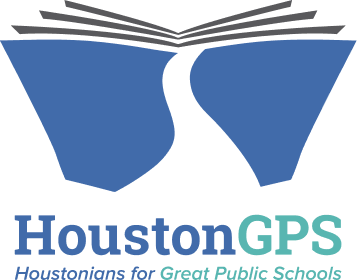Houston ISD Board Meeting Recap 6.13.24
The Houston ISD Board held their June regular board meeting on June 13, 2024. Highlights include:
Preliminary STAAR results indicate significant progress for HISD. The District experienced greater growth than the state and NES campuses saw the most growth. These results are a promising sign that the investment in high-need campuses and instructional quality are on the right track.
The majority of the Board’s discussion focused on the proposed budget for next school year. When considering the budget, it is the Board’s role to determine if the investments proposed by the Superintendent are targeted at improving outcomes for students outlined by their board goals.
BOARD VOTES
All agenda items were approved.
Agenda Item | In Favor | Opposed |
2024-2025 District Budget | 5 | 4 |
Consent Agenda | 9 | 0 |
STAAR END-OF-YEAR RESULTS
Houston ISD saw a higher percent of students meeting grade level than the state average and more campuses saw an increase in student achievement than last year.
The Board received an update from Superintendent Miles and Texas Education Agency (TEA) Conservator Doris Delaney regarding STAAR results from this school year.
Both presentations focused on students who earned Meets or Exceeds status on the exam. Although Approaches is technically considered a passing score on STAAR, students are not considered on grade level unless they earn Meets or Exceeds. This is a critical distinction. By focusing on Meets as the standard, both presentations were reflecting actual student proficiency in each grade level and subject.
Conservator Delaney reported high school end-of-course EOC exam results compared to the state’s average performance. Across all five EOCs, HISD showed greater improvement in the percent of students meeting grade level. While the state still outperforms HISD in terms of proficiency, this increase has helped to close that achievement gap.

When looking at cumulative results, HISD also saw greater gains in students meeting grade level than other large urban districts. Notably, HISD was the only urban district that did not see a decline in students meeting grade level for any subject.

Across grades 3-8, HISD saw an increase in the percent of students meeting grade level in almost every subject area, with NES schools seeing higher growth than non-NES schools.
Superintendent Miles provided preliminary data analysis for STAAR data for grades 3-8. The results were promising, especially for New Education System (NES) schools. In almost every subject, HISD saw an increase in the percent of students meeting grade level.
Critically, NES schools saw an even greater improvement than non-NES schools in almost every subject. Considering NES schools disproportionately serve the District’s highest need students, these results likely reflect progress on closing achievement gaps. We hope to see results broken down by student subpopulations to get a clearer picture.

Big Picture: Preliminary STAAR results indicate significant progress for HISD. The District experienced greater growth than the state and NES campuses saw the most growth. One year’s data is not yet a trend, but these results are a promising indication that the investment in high-need campuses and instructional quality are on the right track.
BOARD BUDGET DISCUSSION HIGHLIGHTS
The majority of the Board’s discussion focused on the proposed budget for next school year. When considering the budget, it is the Board’s role to determine if the investments proposed by the Superintendent are targeted at improving outcomes for students outlined by their board goals.
Board members were focused on alignment between their goals and the proposed budget.

Janette Garza Lindner: Can you help connect how the inputs provided in the budget will lead to the desired student outcomes? What data and research are being used to determine the strategy?
Administration Response: The inputs the District is prioritizing with the proposed budget are continuations and extensions of this year’s strategy. Inputs include the quality of instruction, professional development, high-quality curriculum, rigorous evaluation, and the NES model.
Data from the middle-of-year progress assessments showed promising growth based on those strategies. Similarly, instructional quality is an indicator of outcomes. The District has been collecting data throughout the year through spot observations of classrooms that shows an increase in the quality of instruction. End-of-year STAAR and progress monitoring data also indicate alignment.

Audrey Momanaee: The District is investing more in NES schools. Will the budget allocation have a negative effect on non-NES schools?
Administration Response: It shouldn’t and it didn’t this year. The end-of-year results show that non-NES schools performed well even if they did not see as high of growth as NES schools. Accounting for inflation, the non-NES schools receive more funding per student than before the pandemic. To ensure they have effective resources, the District capped enrollment loss reductions at 12% and kept magnet funding steady. In addition, they have offered to cover the cost of vetted curricula centrally.

Janette Garza Lindner: How is the District ensuring campuses that are not part of the NES model are able to meet student outcome goals?
Administration Response: While not all of the budget inputs are being implemented at non-NES schools, one of the major areas of focus is still quality of instruction. All schools are receiving professional development and using the spot observation tool and principal evaluation system. The goal is not to disrupt successful schools. For C-rated schools, central office provides additional support including offering a choice of vetted curricula.

Angela Flowers: The increased staff at NES campuses is likely one of the inputs driving success. How will the District address achievement gaps between student groups at non-NES schools without this input?
Administration Response: The District has implemented a defined autonomy structure. A- and B-rated campuses who have significant achievement gaps will be required to include a strategy for how they will address the gap in their campus action plan, which the District will monitor and support centrally. For C-rated schools, they are putting additional supports for curricular materials, which will be funded centrally, and purchase service oversight.

Adam Rivon: How is the District monitoring the NES model to determine which areas are having the greatest impact on student achievement?
Administration Response: The District will be doing after action reviews and reports but it will be difficult to disentangle specific inputs of the NES model because it is designed to work as a system. Similarly, the District is looking to hire well-known researchers and potentially have the Houston Education Research Consortium evaluate the progress of NES schools.
Time Check: This month, the Board spent 0% of their meeting time focused on student outcome monitoring, excluding time spent hearing from community speakers. Because the Board chose to defer their student outcome monitoring report to June 27 in favor of budget discussion, this meeting did not include any student outcome time. We recognize how critical the budget is for the District and do appreciate the focus on aligning it to Board goals, but hope to see a robust discussion later this month and moving forward at Board meetings.
Why this Matters: High-performing school districts have school boards that spend most of their time focused on student outcomes rather than operations. Lone Star Governance recommends boards spend at least 50% of their time engaged in student outcome monitoring.
